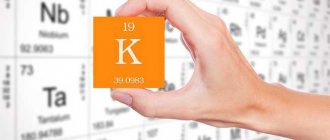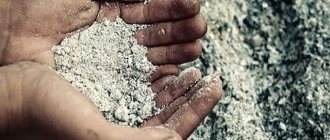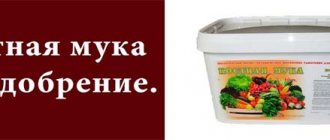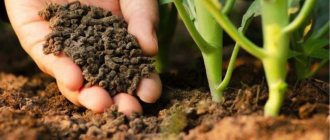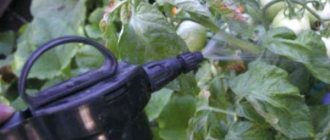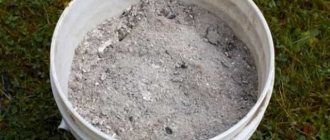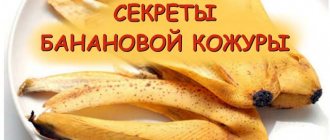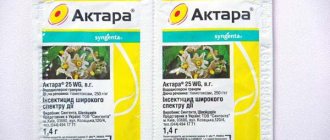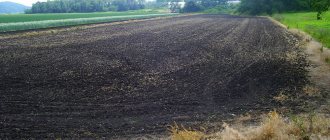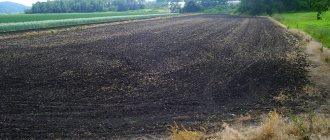Types of peat and their characteristics
Lowland peat
- black color,
- forms deep underground, on the banks of reservoirs or in ravines,
- contains minerals and humic acids,
- decomposes quickly in the absence of oxygen (degree of decomposition more than 40%),
- characterized by high humidity,
- medium reaction – slightly acidic or neutral (pH 5.5-7.0),
- used on clay or sandy soils.
Transitional peat
- used for composting,
- the degree of decomposition is about 40%,
- the reaction of the medium is medium and slightly acidic (pH 3.2-4.6),
- contains micronutrients.
High-moor (sphang) peat
- brown, orange or chestnut color,
- formed on the surface of swamps, reservoirs and slopes,
- the main component is sphagnum moss, as well as wild rosemary, heather, cotton grass and pine,
- the degree of decomposition is about 20%,
- has a loose, porous structure,
- retains moisture well,
- medium reaction – acidic or strongly acidic (pH 2.6-3.2)
When is the use of peat necessary?
Although peat is an organic fertilizer, it is mainly a mixture of completely or semi-decomposed plant residues. And you shouldn’t expect peat to instantly increase soil fertility. In fact, there are not that many nutrients in peat. The nitrogen content in it can be from 0.6 to 2.5% (high peat) and from 1.3 to 3.8% (lowland peat), microelements: Zn up to 250 mg/kg, Cu 0.2-85 mg /kg, Co and Mo 0.1-10 mg/kg, Mn 2-1000 mg/kg.
This amount cannot significantly saturate the soil of your site with nutrients. But still, peat can significantly improve the structure of the soil, making it loose or, as they say, air- and moisture-absorbing. In such soil, air and moisture quickly penetrate to the roots and remain there for a long time, the plants develop better, which means they produce a good harvest and look beautiful.
Therefore, the main function of peat as a fertilizer is to improve the quality of the soil itself, and not its nutritional value. In soil fertilized with such peat, the plant’s root system can better extract all the nutrients it needs, which are already there, or which we add in the form of organic or mineral fertilizers. And this is, perhaps, the main feature of using peat in garden plots.
There is no point in adding it if you have black soil or sandy loamy, nutrient-rich loamy soil. This will not give anything, the proverb “you can’t spoil porridge with butter” does not work here. No, you won’t spoil it, but knowing the price of peat, why waste money?
It’s a completely different matter if the soils are clayey or poor sandy, that is, structureless. Here peat, as a fertilizer, works very well. It loosens clay soils, allowing roots to develop normally, and gives sandy soils structure, allowing them to retain moisture and nutrients well.
This leads to the main rule for using peat - only by combining it with other types of fertilizers: organic or mineral. Peat is simply a reservoir, a storage device, an assistant for retaining the nutrients you add in the soil, and, first of all, in the root zone.
Peat works best as one of the components of the soil, making it air- and moisture-permeable and structural. © The Gardens
Is it possible to add peat to the soil in its pure form?
Peat contains nutrients and minerals, and lowland and transitional peat consists of 40-60% humus. However, despite this, it is not recommended to fertilize a summer cottage with peat alone. It is best to use peat in combination with other organic and mineral fertilizers.
Only lowland peat can be used in its pure form, but first you need to crush it and leave it in this form to ventilate for a couple of months. It is important to collect the dried fertilizer in time. After all, if peat is overdried, it will lose almost all of its beneficial properties. In addition, dry peat dehydrates the soil, drawing moisture from it. Dried lowland peat is most often used only as mulch for lawns in a layer of 5 mm.
High-moor peat in its pure form can cause great harm to the soil and plants, because contains very few nutrients and contributes to soil acidification. It should be applied to the soil only in the form of compost with the addition of other mineral and organic fertilizers. High-moor peat fertilizer is excellent for flower, vegetable and berry crops.
What is peat and is it a fertilizer?
Peat is a loose sedimentary rock used as a mineral. It is obtained from the accumulation of moss residues that have undergone incomplete decomposition. The substance is obtained only in swampy areas. Depending on the location of the soil layers, it can be lowland, upland and transitional. Substances have different purposes, and the algorithm for their use also differs.
It is a slightly acidic substance in its composition, which is why it is often used in agriculture. It allows you to increase the looseness of chernozem and restore natural aeration of the soil. There are other useful properties:
- hygroscopicity - low-lying substances are able to absorb moisture, retain it inside and transfer it to plants in doses;
- saturation – the composition contains mineral compounds;
- Humates provide nutritional value in high concentrations.
Peat as fertilizer
Many plants prefer peat fertilizers as top dressing. Let's look at some of them.
Potato
This crop absorbs micronutrients from peat better than all others. To achieve the best effect, it is recommended to mix peat compost with mineral fertilizers, and the soil should be loose and slightly acidic.
If the soil is light, then peat fertilizer should be applied directly into the holes in the spring. If the soil is heavy, it is better to fertilize it with peat in the fall at the same time as applying manure.
Strawberry
Thanks to peat fertilization, strawberries bloom, develop and bear fruit much better. Peat can be used as mulch for garden beds. To do this, it must first be ventilated, mixed with ash and sawdust (for 10 kg of peat - 1 kg of ash). This is necessary to reduce the acidity level of the peat and not harm the soil.
In addition to nourishing the soil, peat can also be used for the crop itself. You can add it to strawberries in 2 ways:
- in spring, a layer of peat 5 cm thick is added to the hole when planting strawberries,
- In the fall, in preparation for winter, peat compost is scattered between strawberry beds (25 kg per 1 m2) and then dug up.
Tomatoes
The peat mixture is placed in the holes when sowing seedlings. When the plants grow, the mixture is used as top dressing approximately 2 times a month. Fertilizing with peat allows you to get a rich and high-quality harvest.
Cabbage
Peat should not be used in its pure form for cabbage, because this culture prefers a low-acid environment. Therefore, peat is first composted and only then added to the hole when planting grown shoots. Thanks to this feeding, cabbage develops better and becomes more resistant to pests and various diseases.
cucumbers
Cucumbers, like cabbage, feel uncomfortable in an acidic environment. Therefore, peat is first composted and then spread on cucumber beds in a proportion of 20 kg per m2.
Home and garden flowers
Peat can be used as top dressing and mulch not only for vegetables, but also for flowers. The best effect is achieved if you use a peat mixture in combination with other organic, mineral fertilizers and sand. The use of such fertilizer promotes better growth and development of plants, as well as abundant flowering.
Peat use
The scope of its application in agriculture is very extensive. The mineral is used in garden beds, indoors, in the garden and when growing flowers.
For the garden
Pure peat is not used to fertilize beds. Basically, it is mixed with humus and other organic substances. Moreover, it is introduced wet 50-60%. Otherwise it will be mulching.
Peat compost is a common phenomenon in summer cottages. In addition, summer residents call this method of application the most effective.
For the greenhouse
The ability of a mineral to absorb moisture and at the same time retain it is indispensable when arranging a greenhouse. With the help of these properties, it maintains the optimal temperature regime of the soil in the greenhouse for a long time. In combination, the mineral is an antiseptic. Therefore, greenhouses are filled with peat to 50-90%.
For garden
For use in the garden, preliminary preparation of the mineral is required. It is recommended to keep it thoroughly fluffed for 2 weeks. If possible, sift through a sieve.
When using peat in the garden, constant watering is required. Proper use will provide plant roots with the nutrients and oxygen necessary for active plant growth.
For plants
Peat is used for many types of crops. Apply as fertilizer in spring or autumn for digging. This helps to improve the composition of the soil and increase the nutrients that the plant takes for proper development and growth.
For flowers
Lovers of growing flowers, garden and indoor, also note the positive effect of peat on plants. Using minerals as fertilizer helps plants recover faster after transplantation.
Peonies respond especially well. They grow faster, bloom better and have a very strong smell. It is used as mulch and top dressing. In the second case, it is necessary to combine with mineral fertilizers.
Application in winter
In winter, the mineral is used for compost. During the winter it rots and turns into the most nutritious fertilizer. Applying it in winter causes early snow melting. Consequently, the soil begins to warm up earlier.
In what quantities is peat added to the soil?
It is recommended to add peat to the soil in spring and autumn, evenly distributing it over the ground in a proportion of 30-40 kg per m2, and then digging it to the depth of a spade bayonet. Peat can also be poured in a layer of 5-6 cm into the circles of trees, shrubs and planting areas.
It is impossible to spoil or over-fertilize the soil with peat, but the rules for applying this fertilizer must be followed. It should also be remembered that peat has high acidity, especially high-moor peat, so before applying its acidity level must be neutralized. To do this, for 100 kg of peat you will need 5 kg of lime, 4-5 kg of dolomite flour or 10-12 kg of ash.
What soil needs peat?
If the soil on your site is clayey or sandy, depleted or contains little organic matter in its composition, then the application of peat together with other organic and mineral fertilizers is necessary. Peat will significantly increase fertility, improve the structure and composition of the soil, it will become looser and lighter, moisture-permeable and breathable.
If the soil is fertile, has a good composition, light loamy or sandy loam, then the use of peat will be inappropriate, as it will not give any effect as a fertilizer.
The benefits of peat for the garden
When applied correctly, peat makes the soil porous and light, making it easier for water and air to reach plant roots. Thanks to its natural antiseptic properties, peat reduces the likelihood of pathogenic fungi and bacteria developing in the soil. In addition, peat helps the soil warm up faster and, by absorbing water, retains along with it many other substances beneficial to plants.
When is peat needed?
If the soil is poor or generally infertile, adding peat along with organic fertilizers will help bring it to a state suitable for cultivating a vegetable garden or creating a garden. It also helps provide access to water and air to the roots in soils prone to crusting on the top layer.
Due to its increased acidity, peat can improve the condition of soil with low acidity. This is perhaps one of the few cases when it is better to use not a low-lying, but a middle or even top layer of peat, but here you need to act carefully and take into account the current level of acidity.
When peat is not needed
If the soil is fertile and there are no problems with it, peat does not need to be used. The beneficial substances contained in it will not give much effect compared to other fertilizers. In such a situation, the use of peat may be considered an unproductive waste of funds.
In addition, peat is not recommended for use in soils with high acidity. Even low-lying. Although it is considered neutral, it still slightly raises this indicator, which does not benefit the initially acidic soil.
In the image you can see a clear separation of peat into layers
Which peat is better: lowland or high-moor?
Compared to highland peat, lowland peat is considered more universal in use, because has a neutral environment, contains a large amount of nutrients and 70% organic matter, and is also suitable for any type of soil.
But this does not mean that high-moor peat is not used at all. Yes, it acidifies the soil, but some plants, on the contrary, prefer an acidic environment. These include heather, hydrangea, Erica, blueberry, rhododendron, etc. When planting such crops, high-moor peat is added to the hole.
If you add lime, dolomite flour or ash to high-moor peat, you can get neutralized peat. It is used in preparing soils, as a cover for plants, and for making composts and mulch.
It is high-moor acidic peat that has antiseptic, absorption and bactericidal properties, so it is often used as filters for the production of peat pots, tablets and composite soils.
Peat compost
Regardless of what kind of peat you use, lowland or highland, it is more advisable to use it together with other fertilizers, because in some cases, peat in its pure form can be not only useless, but also dangerous.
The best solution is to make peat compost. It may include ash, sawdust, tops, mowed grass, food waste, etc.
It is recommended to arrange a compost heap with a diameter of 2 * 2 m, away from plantings and resting places, preferably in the shade.
Lay the compost heap in layers in the following sequence:
- 30 cm layer of peat (bottom layer);
- 10 cm layer of sawdust;
- 20 cm layer of tops, grass, food waste, etc. mixed with soil from the garden;
- 20 cm layer of manure (any will do);
- 20-30 cm layer of peat (top layer).
When all the layers are laid, the peat compost is left to rot for 1-1.5 years. The height of the compost heap should not exceed 1.5 meters. In summer it is recommended to cover it with a canopy to protect it from direct sunlight, in the fall to cover it with dry leaves, high peat, soil, branches, etc., and in winter to cover it with snow.
From time to time, the compost heap must be moistened with water with the addition of superphosphate. It is recommended to mix the pile several times during the summer so that the top and bottom layers change places.
The finished compost is evenly distributed over the ground before sowing, added to the holes before planting, and sprinkled near trees and shrubs (10-20 kg of fertilizer per 10 m2 of soil).
Peat application methods
Peat is certainly needed in the garden, but gardeners often make mistakes when using it. The main thing is to initially determine what exactly the soil needs, otherwise, instead of the expected benefit, the substance will cause harm. If the cultivated area is fertile, the substance should not be applied. You can use acidic peat if the soil is depleted. There are different application methods that have their own advantages and disadvantages.
Embedding peat into the soil
Initially, the substrate has high humidity, so it must be stored in airtight containers or bags to prevent drying out. If a substance changes its structure, it will be difficult to restore it. This nuance forces gardeners to embed peat into the soil rather than leave it on the surface. Apply fertilizing in this way:
- spread the mixture over the beds and dig up to 20-30 cm;
- placed between the plants and carefully loosen the soil, mixing the component with the top layer of soil;
- provide regular watering.
If the soil is too dry after adding peat, there will be no benefit. The substance only when wet is able to penetrate into the lower layers of the soil, improving their structure.
Adding peat when planting
High-quality peat is expensive, so its use in agriculture is not widespread. It is rarely used for application to all areas. More often, sterile mixtures are used for planting seedlings and growing seedlings. This allows you to significantly reduce the loss of planting material. When planting fastidious crops in open ground, add several handfuls of the substance to the hole. After this, watering is provided regularly, making sure that the soil does not dry out. Fertilizing is not carried out in the first 2 months after planting - humic acids are quite enough for full development.
Preparing peat compost
Peat as a fertilizer in its pure form does not provide enough nutrition, so summer residents make a mixture - peat compost. For its production, foliage, food waste, and any plant residues are used. All this is put in a hole and kept in it for 1.5 years. The readiness of the mixture is determined visually; it should be homogeneous and loose. Before use, the resulting composition is combined with peat in a 1:1 ratio, embedded in the soil or applied to each crop before planting.
Mistakes of novice gardeners
- using peat in its pure form, without preliminary preparation,
- replacing other fertilizers with peat,
- improper use and non-compliance with dosage,
- application on fertile soils (pointless),
- purchasing peat from a dubious supplier.
Proper application of peat fertilizers improves soil structure, promotes better growth and development of plants, as well as increased fertility and productivity.
sells and delivers high-quality high-moor and low-lying peat at the best price. Our company has its own fleet of vehicles and all the necessary production facilities, so you can order delivery of peat in any volume throughout Moscow or the Moscow region, or arrange pickup and pick up the goods yourself.
